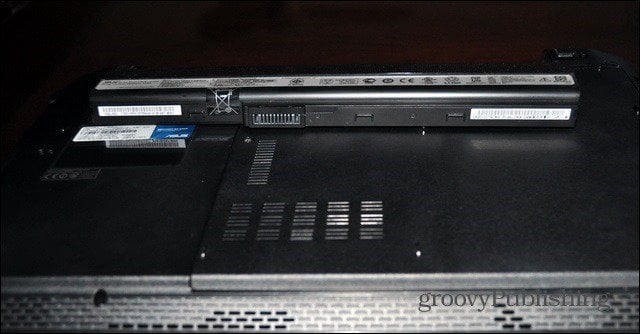Storing a Lithium-Ion Battery
The answer is yes, while plugged into AC, your laptop will work just fine even if the battery isn’t inside it, as detailed in this article. Now that we’ve got that out of the way let’s see the best way to store a laptop battery. Today, Lithium-Ion batteries are the battery type found in pretty much 99% of all laptop PC and devices sold over the past five years. Although most Lithium-Ion batteries will perform well for 2-3 years, if you want to extend your battery life, you can see following a few tips.
First, before storing your battery, make sure it’s not empty. Over time, batteries will leak power, so if it’s stored at no charge in it, there’s a chance it won’t accept a charge again. Since this defeats our goal of extending the life of a battery… don’t do that! To lose the smallest amount of power while in storage, charge your battery to 40%, unplug it and store it in a temperature-controlled location. The below graph (data comes from here) outlines the ideal charge point and temperature for battery storage. As you can see, 0 degrees centigrade (which translates to 32 degrees Fahrenheit) and 40% battery charge loses the least amount of power—just 2%. The reason is that constant temperature is your best friend. Now the good news is most refrigerators hover between 34-38 degrees Fahrenheit, which is almost perfect. It also provides the battery a constant temperature that rarely changes.
Charge my battery to 40% and stick it in the fridge. Got it. Anything else?
It’s also a good idea to remove the battery from your fridge every month and perform a full recharge-discharge cycle before putting it back in. Before you put it back in the laptop, though, make sure that you let the Ziploc bag containing it reach room temperature. If you don’t, there’s a serious risk of damaging the battery. If you follow the instructions above, your Lithium-Ion battery will be in great shape next time you need it. Thanks! That way you also won’t need to worry about moisture or take up space in your fridge. ;) -S The greatest disadvantage of a fridge is, the batteries will take up space which you can’t use for food. And if by accident the cells get damaged, the can explode and ruin your fridge. So I’d say, save them at 40% in your cellar of other cool place that isn’t used a lot and check the capacity once a year. I… did not know this. Oh dear. You mean it reduces its storage capacity permanently? Does it only decrease the capacity if the battery is left in while the laptop is off? My laptop batteries cost me about $18 and typically last for 5 years or more. The charger is plugged in 24/7. So my cost is about $3.60 a yer. In addition, as computational demands increase, many computers bring more cores on line increasing current requirements. Some chargers, especially non-oem replacements, may not be able to meet this demand surge, so your processors may not see their top speed. Batteries generally have no problem meeting the increased demand. If your time is worth $3 an hour, and it takes you just 10 minutes to pull the battery out of the fridge, run a recharge/discharge cycle and (not forgetting to renew the desiccant in the ziplock) put the battery back in the fridge, you will have spent nearly twice as much chasing battery longevity – and you’ve used up a years worth of space in your fridge. So if you value your time at significantly less than $3/hour, don’t mind taking up space in the fridge, don’t care if you lose your work due to power interruption and like a slow computer – this is a GREAT idea. Okay. It’s not. Really. Just leave the batteries in the computer. That’s how it was designed. But this isn’t useless information. It gives some insight into desired properties of much larger battery banks. For example, if I’m building a lithium-ion battery bank for a 6kW power wall, does it make sense to cool the batteries? Considering that we’re now talking hundreds or thousands of dollars and potentially killing the battery packs in less than a year, I’d say YES! I’m currently doing a design that involves using prismatic cells. Due to this article, I am considering inserting copper plates every few cells to be water cooled. This would establish an average temperature of about 65F for batteries regardless of most operating conditions… which could triple the life of the batteries. Comment Name * Email *
Δ Save my name and email and send me emails as new comments are made to this post.
![]()



